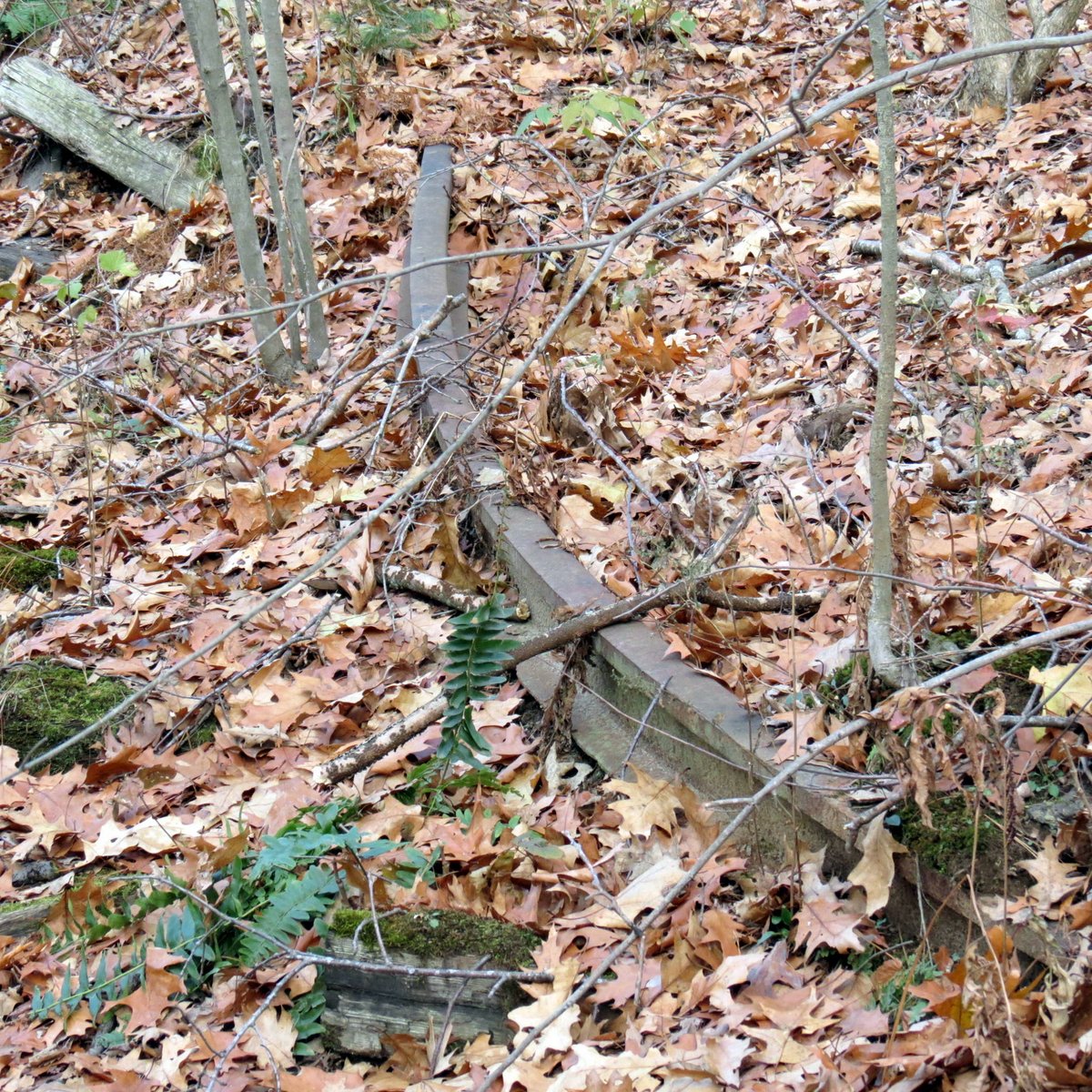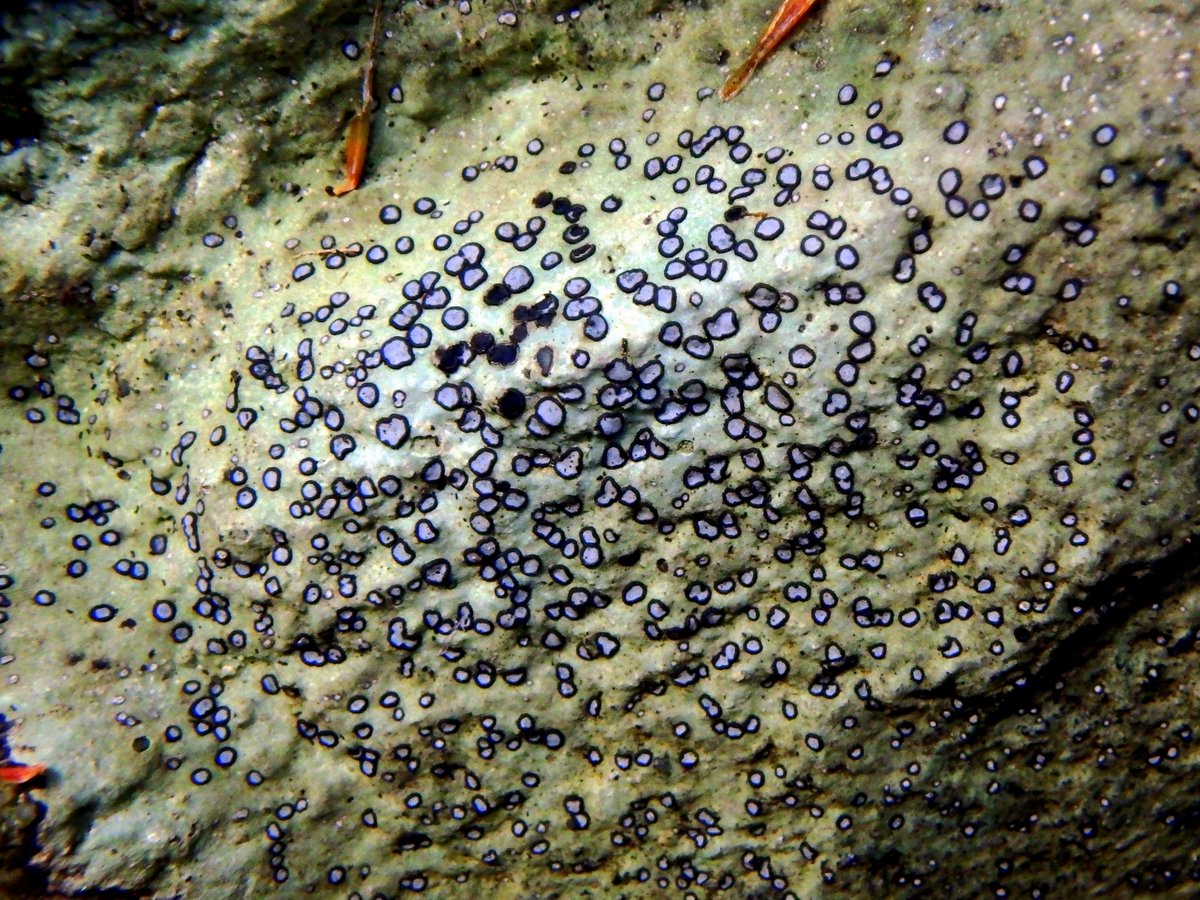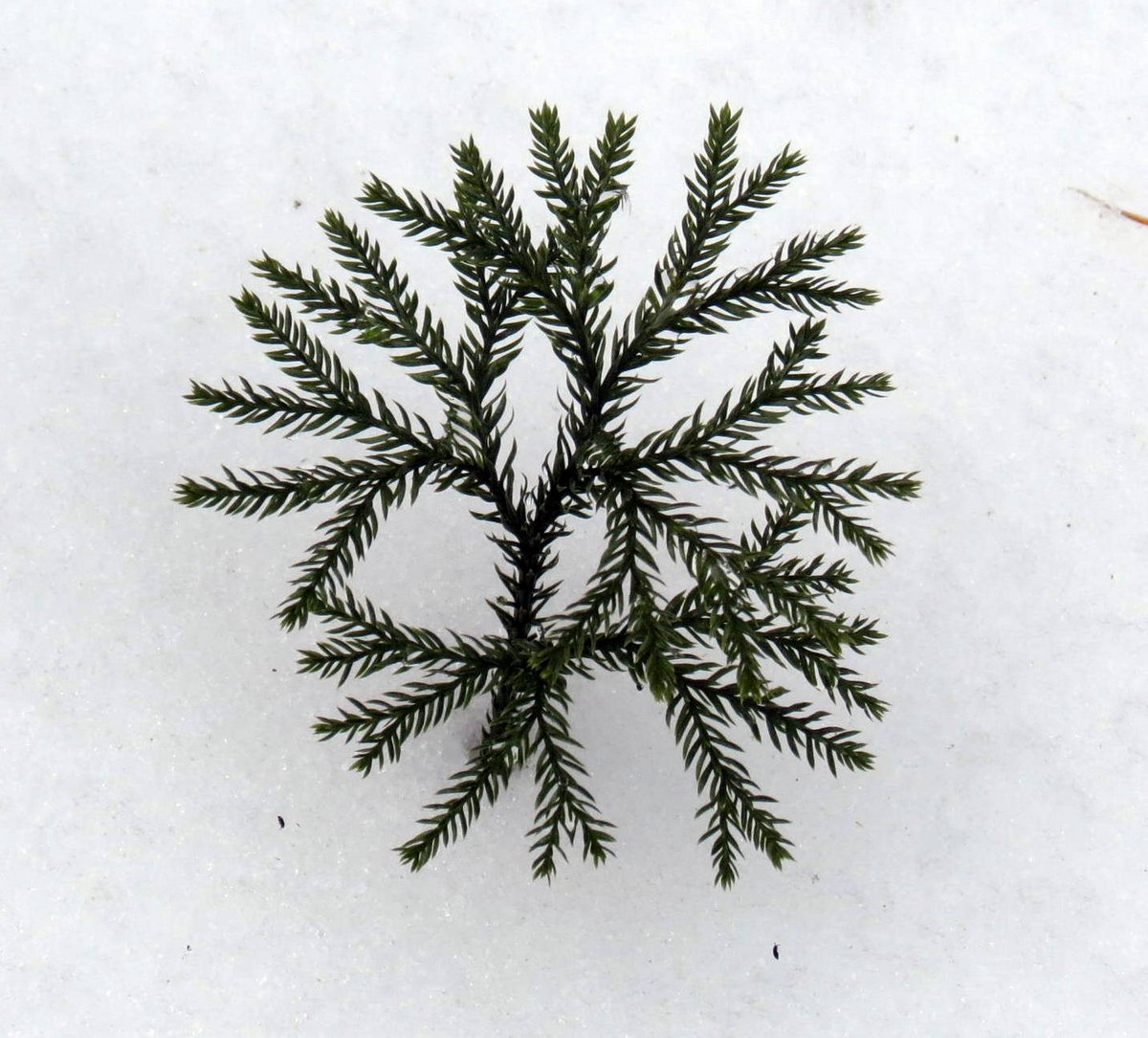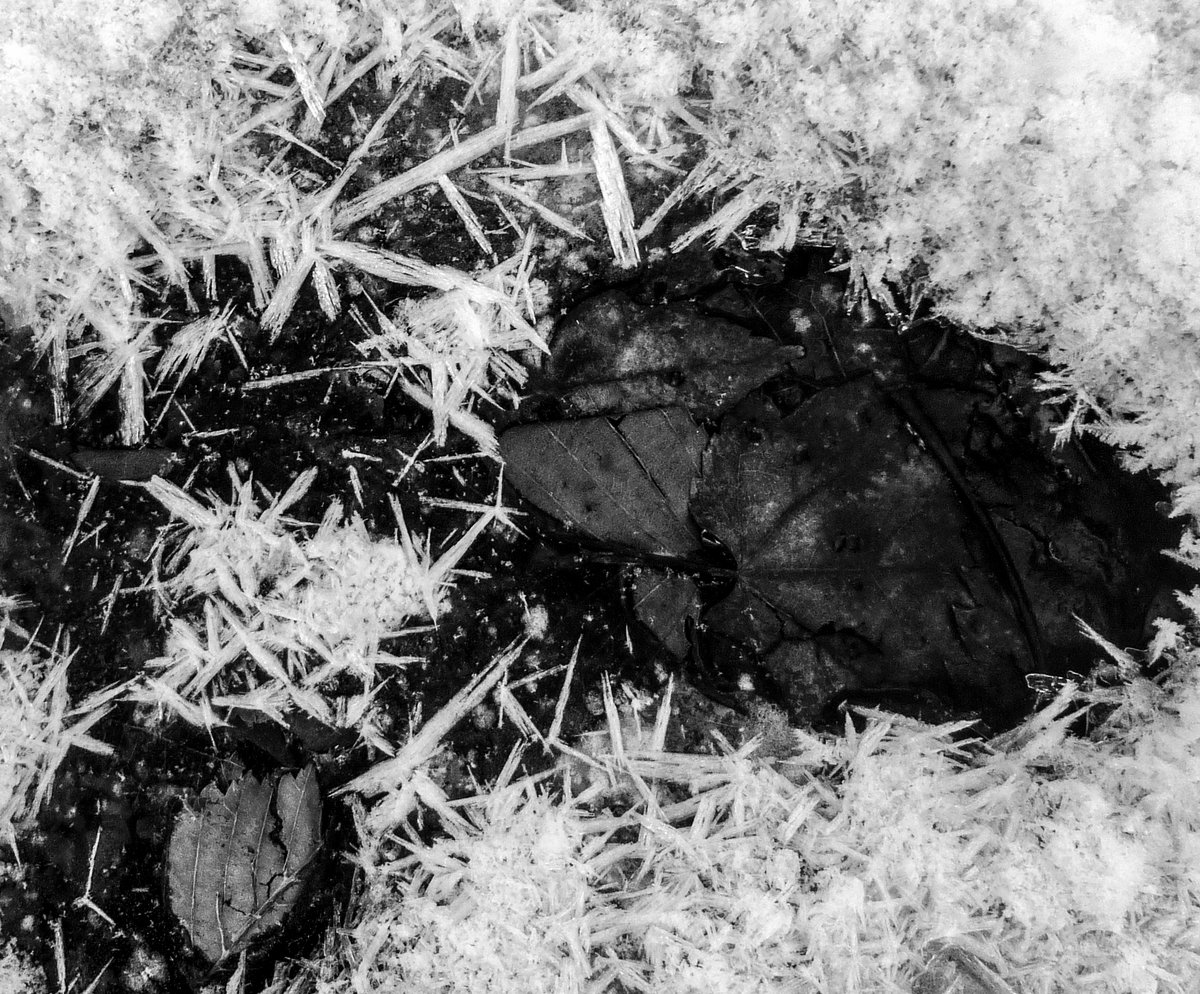There is an old stone wall in Swanzey that I like to follow in winter because it has a southern exposure, and that coupled with evergreen branches overhead usually means that very little snow is on the ground. This year though, I got there to find that all the pine trees along the wall had been cut so there was snow right up to the wall. It’s still a great place to explore, so the bit of snow I got in my hiking boots didn’t really bother me. The reason the stones look like they do in this photo is because they are almost completely covered by rock greenshield lichens (Flavoparmelia baltimorensis).
Rock greenshield lichens are very common in this area and are another of those bits of nature that you see so often they no longer register, but when you take the time to look closer you find that they are quite pretty. They must like it here because they cover entire lengths of this wall. It had rained all day the day before so all the lichens I saw were at peak beauty.
The bushy rock lichen (Ramalina intermedia) I first found here a couple of years ago has grown quite a lot and there are even smaller ones growing under it now. Lichen communities grow in succession with many varieties of crustose lichens as pioneers. Foliose lichens come next as intermediary species and finally fruticose lichens like this one are considered climax species. What I don’t know is, how much time is between pioneer and climax? Climax communities of lichens are considered “old growth” communities.
The sun tried to come out but the clouds won the battle.
I believe there must have been animals kept here in the past because holes were drilled into stones and steel rods inserted into them to increase the wall height by about a foot and a half. Each rod has a flattened tip with a hole in it and the hole most likely had wire passed through it. It was fairly common practice in New England. Stone walls were usually too low to be effective and cows and other farm animals often jumped right over them, so their height was increased by adding wire or other materials. You had to pay a fine if your animals escaped and were caught roaming free. They were brought to the town pound and the owner had to pay to get them back plus the cost of feeding them.
As the steel ground against the granite over the years the holes were made bigger so cut nails were driven in beside the rods to keep them straight. The cut nails seen here date the steel rods to sometime between 1800 and 1900, but the wall itself has been here I think since the mid-1700s.
Because it’s so warm near stone walls in the winter plants like to grow along them. Common speedwell (Veronica officinalis) thrives here. This European native is common here and has been used medicinally for centuries. Its leaves have also been used as a tea substitute and I wouldn’t be surprised to find that the early settlers brought it with them.
Mullein (Verbascum thapsus) also does well here along the wall. In fact there is an amazing variety of plants growing on or near this wall. Native Americans used tea made from mullein’s large, gray green furry leaves to treat asthma and other respiratory ailments. It is also said to be useful as a relaxant and sleep aid.
This is a shot of one of the roots of a very old pine stump. They looked to be slowly rotting away but the wave pattern in this one caught my eye. You don’t see things like this every day.
Pixie cup lichens (Cladonia asahinae) grow all along the wall. The tiny little golf tee shaped parts are the fruiting bodies of this lichen. Spores produced in them will be splashed out of the cup by raindrops. Pixie cups almost always produce large groups of fruiting bodies like these.
Scattered rock posy lichens (Rhizoplaca subdiscrepans) grow all along the wall in sunnier spots. They are quite small and difficult to see without magnification, but it’s worth looking for them because they almost always have their bright orange apothecia showing. They like to grow on stone, especially granite, in full sun.
All of the sudden I’m seeing lots of chipmunks, and here was a chipmunk burrow. These little rodents, bigger than a mouse but smaller than a squirrel, store food for winter in underground chambers and stay underground until spring. In spring they’re usually very hungry, hence all the activity. They love to run along stone walls as well and often follow me through the woods that way, chirping and chucking the whole way.
Some of the stones here are like quilts with such a patchwork of lichens on them.
The most common stone walls in this area are “tossed walls.” Farmers worked from dawn to dusk in Colonial New England and tossed walls required the least amount of time and effort because smaller stones were literally tossed or thrown on top of one another. In the early years getting rid of the plentiful stones quickly and efficiently was more important than enclosing the fields, but this farmer took the time to build a seat into this wall. It’s at the perfect height to sit on (I tried it) and wide enough for two people.
Near the stone seat is an iron ring in the wall where a horse could be hitched. Both the stone seat and hitching ring are in the shadiest part of this property so it makes perfect sense that this would be the place to sit and have lunch.
The farmer could even have had black raspberries for lunch, in season. They grow in several places along the wall.
As time passed barbed wire was often added to stone walls to keep animals in or out. This wire grew out of the very center of a pine tree, so it was tacked onto the tree quite a while ago. Running their saw into steel wire is one of a wood cutter’s worst nightmares come true but many things have been found inside trees, from axe heads to gravestones to even bicycles.
This chain hook is one of my favorite bits of antique iron work that I find here. A link from a chain would have been hooked over it and then another link hooked over a similar hook a certain distance away. Chains were (and are) often hung across roads or driveways as a way to say “no admittance.” What I like about this example is the way the blacksmith tapered the hook over its length and finally ended it in what looks like a dragon’s tail. You can still see the marks of the hammer all along its length. It’s a beautiful thing and if I owned it, especially since my grandfather was a blacksmith, it would be considered a work of art.
Even in silhouette pokeweed (Phytolacca americana) can be readily identified by the long stalks that held its berries. What surprised me by these plants is how they were still standing. Pokeweed stems weaken quickly at ground level and it doesn’t usually take much snow to bring them down. Native Americans used the plant medicinally and also used the red juice from its berries to decorate their horses. Recently scientists found that the red dye made from the berries can be used to coat solar cells, increasing their efficiency.
A small oak tree hung on to its fall color and was beautiful on this cloudy, wet day. I loved seeing its bright cheery colors.
The truth is not in the touch of a stone, but in what the stone tells you. ~Rene Denfeld
Thanks for stopping in.












































































































































































